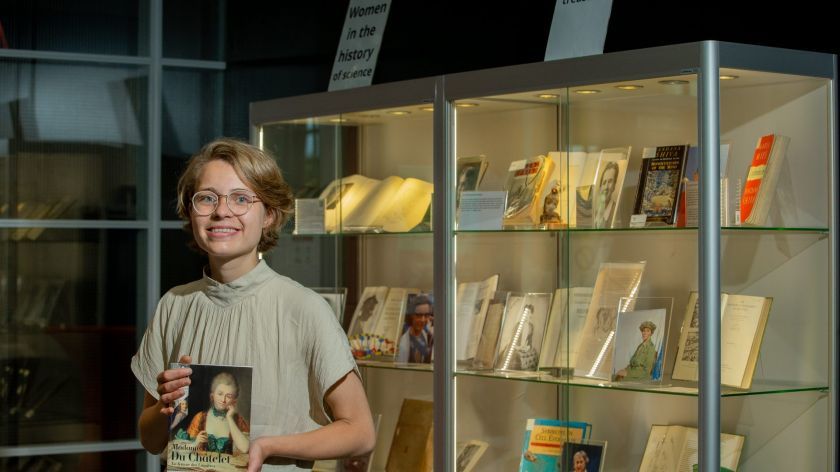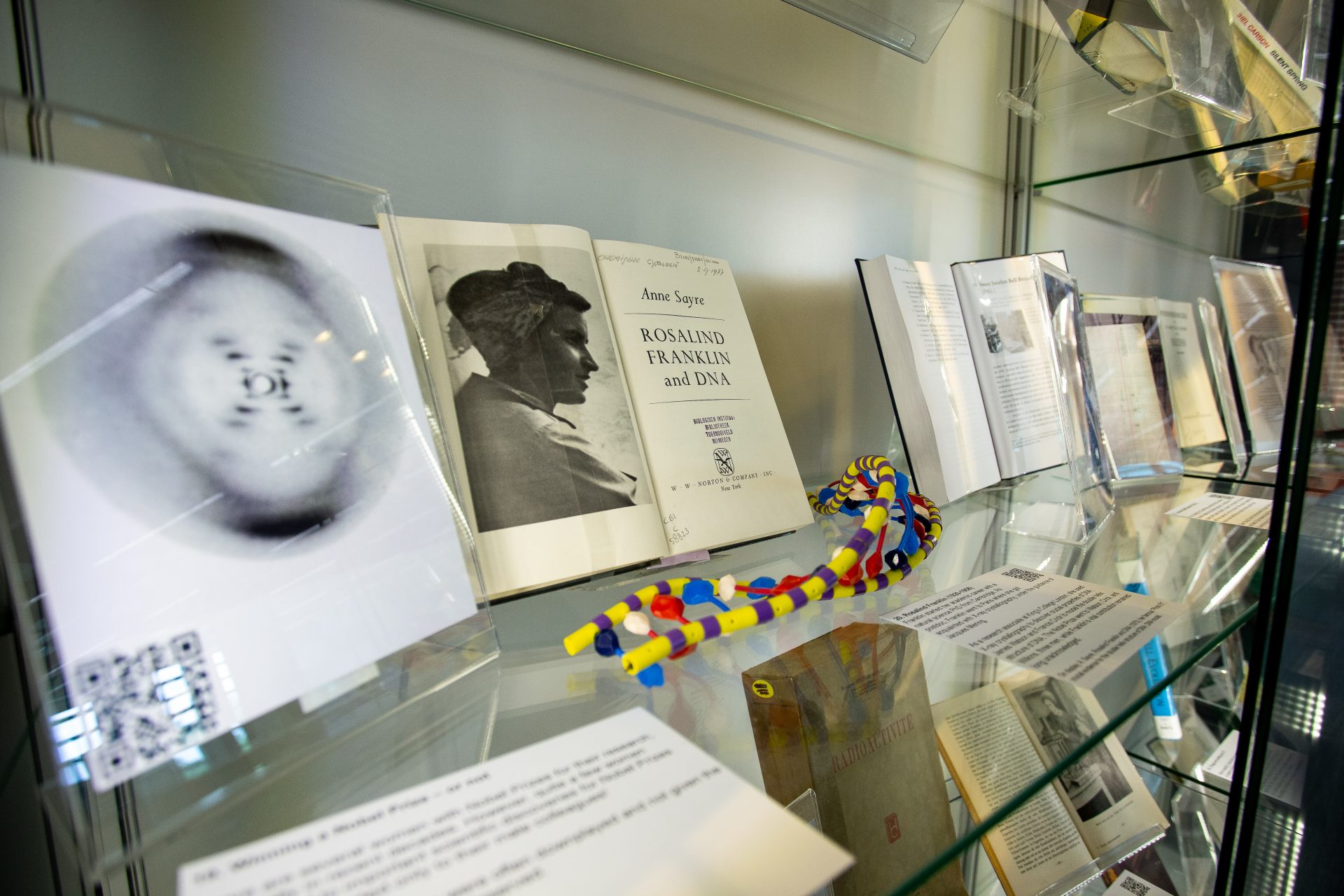Female scientists have always been a great influence, student Manon shows with her exhibition
-
 Manon Lambooij at the exhibition about women in science. Photo: David van Haren
Manon Lambooij at the exhibition about women in science. Photo: David van Haren
There is an exhibition about women in (exact) science in the library of the Huygensbuilding. Philosophy and history student Manon Lambooij composed the exposition. Why? ‘By placing the female scientists of the past next to the traditional ‘big names’, it becomes easier to assess how important and influential they were.’
There is an exhibition about women in (exact) science in the library of the Huygensbuilding . Philosophy and history student Manon Lambooij composed the exposition. Why? ‘By placing the female scientists of the past next to the traditional ‘big names’, it becomes easier to assess how important and influential they were.’
There are ultimately about fifty books displayed in the glass cases in the Library of Science in the Huygensbuilding, but Manon Lambooij could have displayed many more. Whoever looks close enough will find plenty of women in the history of science with stories of inclusion and exclusion, the philosophy and history student says.
How did you make the selection for this exhibition?
‘There had to be visually interesting material to be displayed, I had to make a selection per theme, and the women had to fit in the storyline.’
Where did the idea to do this come from?
‘Associate Professor Willem Halffman noticed that the glass cases were empty and came up with the idea. He proposed it to Carla Rita Palmerino, Professor of History of Philosophy. She knew I was already engaged in this subject and asked me for this.’
Why are you so engaged in this subject?
‘In the first year of philosophy, you are taught all these well-known philosophers. That year, I was thinking: where are the women? Because if you look for them, there are plenty. I have continued to delve into this field ever since. My interests mostly lie in women from the early modern age, between 1500 and 1800, who were engaged in science. But I also looked at other eras for this exhibition.’
You did not just select books by women, but also provided an explanation. What is your story about?
‘It is about inclusion and exclusion. Some of the reasons that caused that were the same in the early modern age as they were in the nineteenth century. I came across women who made important contributions to discoveries for which men got a Nobel Prize. You can tell that women were unable to obtain a steady job in science.
On the other hand, you can see the exceptions, like Laura Bassi, the first female professor from the eighteenth century. Or Maria Sibylla Merian, who was schooled as a painter and captured flora and fauna of her own volition, and thus did important work for entomology (the study of insects, EB.). She made beautiful drawings of the Surinam nature when she travelled there in 1699.’
‘You can see that there is currently much more attention for the work of women in science’
You were limited to books for the exhibition, but it probably wasn’t self-evident for a lot of women to publish.
‘That’s true. We know that some women were important because their correspondence with male scientists were preserved. Some examples would be Elisabeth of Bohemia and Anna Maria van Schurman. They corresponded with René Descartes, Constantijn Huygens and other very well-known scientists. It is known that chemist Antoine Lavoisier’s wife was of great importance to his work.’
You were also allowed to display works from the special collection. Which were those?
We were allowed to briefly show De vrouw: haar bouw en haar inwendige organen by Aletta Jacobs from 1898 for the opening, but it had to be returned afterwards. We also had Institutions de physique by Émilie du Châtelet from the first half of the eighteenth century, and a book by Berthe Hoola van Nooten on the flora of Java.’
Should there be more educational attention to the history of women in science?
‘You can see that there is currently much more attention for the work of women in science. By adding female scientists of the past to the curriculum and placing them next to the traditional ‘big names’, it becomes easier to assess how important and influential they were. Through this attention, we will find out which works have remained undetected for so long, and I believe that they will then be included in the canon.’
It definitely sounds like you are nowhere near done with this subject.
‘No, it still fascinates me, so I will continue engaging in it.’
Exhibition
The exhibition by Manon Lambooij will run until October 31st in the Library of Science.
Translated by Milou Aluy-van der Meij




